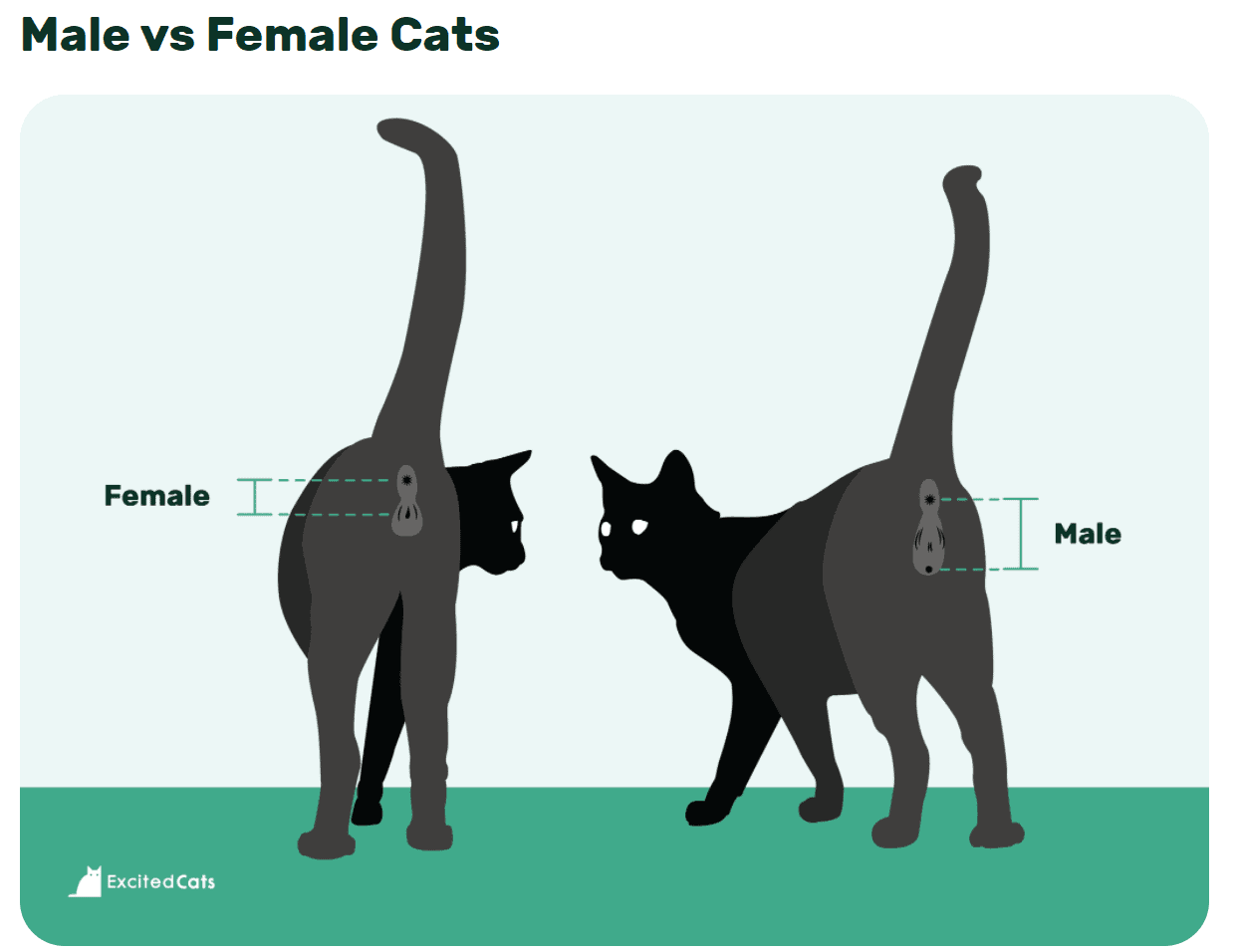How to Tell if a Cat Is Male or Female: 3 Vet-Approved Ways
Updated on

Determining the gender of a cat can be tricky, especially with kittens. If you are trying to tell whether a cat is male or female, the markers visible depend on the age and gender of the cat. The most foolproof method is to compare genital openings, but it can sometimes be tricky to tell. You also might want to check gender without picking up the cat, especially if it is a stray. In this article, we’ll compare methods from least to most intrusive.
The 3 Ways to Tell if a Cat Is Male or Female
1. Check for Gendered Colorations
Before you start lifting tails, pause a second. There might be an easier way! You may have heard that calico cats are all female, and this is generally true. Calico and tortoiseshell cats have vivid black (or gray) and orange splotches. If a cat has both black and orange, it’s almost certainly female. That’s because color is an X-chromosome-linked characteristic. That means that a female (XX) cat can get two copies of the gene—one orange XB and one non-orange Xb—and end up with the colorful coat, while males (XY) get one or the other since Y is not a color related chromosome.
You might also hear that orange cats are generally male. A female cat needs to get two orange genes, one on each chromosome. This means that female orange cats are a little rarer than males, but it isn’t a 100% reliable way to tell.

2. Look for the Scrotum
The next easiest marker of gender is the scrotum in male cats. Once a male cat reaches sexual maturity, reproductive organs are usually easy to spot. On non-neutered male cats, the testicles are usually visible at a glance, leaving no question of the cat’s gender. You’ll find them a few inches below the tail, and they are usually visible from behind by lifting the cat’s tail or from beneath when the cat is belly-up.
Neutered males and kittens can be a bit harder to tell. Neutered male cats generally still have a visible scrotum, but it is smaller and harder to see, especially on long-haired cats. Male kittens have underdeveloped testicles that aren’t always visible. However, their scrotum is present.
3. Compare Genital Openings
If you are sexing kittens or still aren’t sure, you can also compare the shape of the genital opening. The easiest way to do this is to lift the cat’s tail and look from behind. You should see a round opening right beneath the tail—that’s the anus. The genital opening will be beneath that. In male kittens, it is round and farther from the anus. In female kittens, it will look like a vertical slit and be closer to the anus. You can think of male cats as having colon-shaped openings, while female cats look more like an upside-down exclamation point. (: vs ¡)

Final Thoughts
We hope these methods have been helpful to you in determining your cat’s gender. Although it’s sometimes hard to tell immediately, these methods can help you be sure of your cat’s gender before you decide on a name.
Related Read:
- Do Two Male Cats Get Along Better Than Two Female Cats?
- Do Male Cats Scratch More Than Females? Facts & Care Tips
Featured Image Credit: Sarah Fields Photography, Shutterstock












